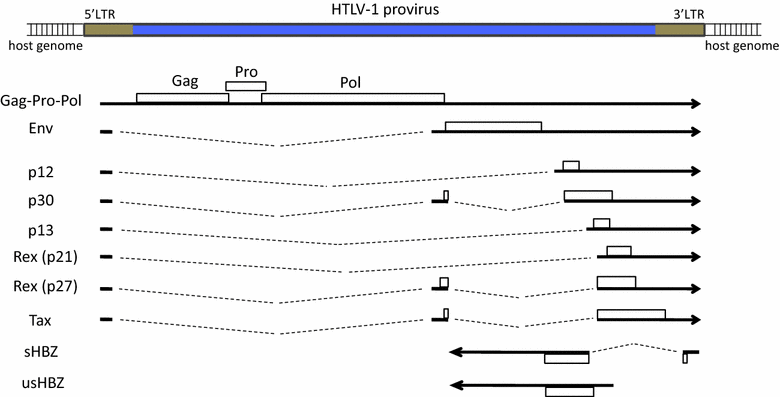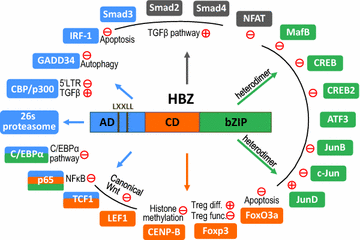Multifaceted functions and roles of HBZ in HTLV-1 pathogenesis
- PMID: 26979059
- PMCID: PMC4793531
- DOI: 10.1186/s12977-016-0249-x
Multifaceted functions and roles of HBZ in HTLV-1 pathogenesis
Abstract
Human T cell leukemia virus type 1 (HTLV-1) is an oncogenic retrovirus responsible for the development of adult T-cell leukemia (ATL). Although HTLV-1 harbors an oncogene, tax, that transforms T cells in vitro and induces leukemia in transgenic mice, tax expression is frequently disrupted in ATL, making the oncogenesis of ATL a bit mysterious. The HTLV-1 bZIP factor (HBZ) gene was discovered in 2002 and has been found to promote T-cell proliferation and cause lymphoma in transgenic mice. Thus HBZ has become a novel hotspot of HTLV-1 research. This review summarizes the current findings on HBZ with a special focus on its potential links to the oncogenesis of ATL. We propose viewing HBZ as a critical contributing factor in ATL development.
Keywords: HBZ; HTLV-1; Regulatory T cell; Tax; Viral oncogenesis.
Figures



References
Publication types
MeSH terms
Substances
LinkOut - more resources
Full Text Sources
Other Literature Sources
Miscellaneous

